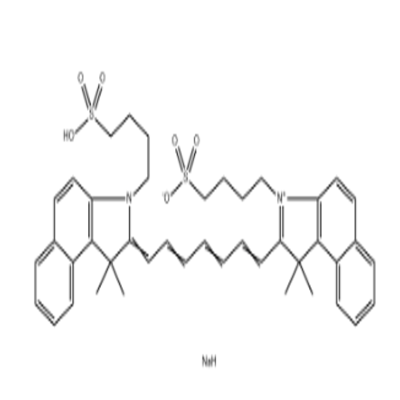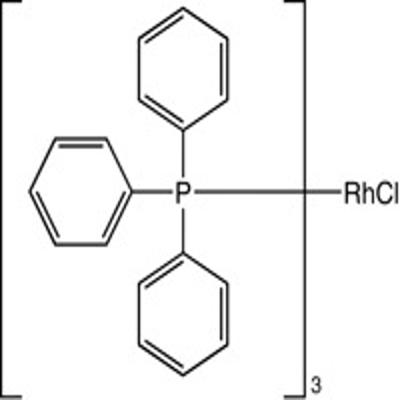-
Categories
-
Pharmaceutical Intermediates
-
Active Pharmaceutical Ingredients
-
Food Additives
- Industrial Coatings
- Agrochemicals
- Dyes and Pigments
- Surfactant
- Flavors and Fragrances
- Chemical Reagents
- Catalyst and Auxiliary
- Natural Products
- Inorganic Chemistry
-
Organic Chemistry
-
Biochemical Engineering
- Analytical Chemistry
- Cosmetic Ingredient
-
Pharmaceutical Intermediates
Promotion
ECHEMI Mall
Wholesale
Weekly Price
Exhibition
News
-
Trade Service
At present, infectious disease prevention and control is closely related to everyone, how much do you know about the Infectious Disease Prevention and Control Law of the People's Republic of China (hereinafter referred to as the Infectious Disease Prevention and Control Law)? The Law on the Prevention and Control of Infectious Diseases is a legal document established to prevent, control and eliminate the occurrence and prevalence of infectious diseases and to safeguard human health and public health.
During the National Day holiday (October 2, 2020), the official website of the National Health and Health Commission issued a new revised version of the Law on the Prevention and Control of Infectious Diseases (revised draft for comments), with a deadline of 15 October 2020 for comments: October 15, 2020, the new version of the Law on the Prevention and Control of Infectious Diseases has nine chapters and 100 articles, in order to implement General Secretary Xi's important instructions on strengthening the rule of law in public health, comprehensively strengthening and improving the construction of relevant laws and regulations in the field of public health.
This paper compares and analyzes the main new revisions of the old and new versions of the Infectious Disease Prevention and Control Law, the blue font of the article is the new or modified content, and the red font contains the deleted content.
I. Analysis of the new revised version of the Basic Framework Structure of the Infectious Disease Prevention and Control Law The basic framework structure of the new Version of the Infectious Disease Prevention and Control Law has a total of nine chapters and 100 articles, including general rules, infectious disease prevention, outbreak reporting, notification and publication, outbreak control, medical treatment, safeguards, supervision and management, legal liability, by-laws, and the old version (2013 edition) compared to the total number of articles increased by 20, the content of the chapter has not changed, but the original Chapter VI supervision and management and Chapter VII safeguards order adjusted, the number of words from the original about 139,000 words increased to about 201,000 words, the establishment of a relatively sound legal system for the prevention and treatment of infectious diseases.
II, the analysis of the new revised version of the "Infectious Disease Prevention and Control Law" revised five changes in the current domestic epidemic spread momentum has been basically curbed, prevention and control work has achieved phased results, but the foreign epidemic is still very serious, the epidemic prevention and control exposed China's infectious disease prevention and control work short board and weaknesses, the urgent need to carry out targeted revision of the "Infectious Disease Prevention and Control Law" work.
changes to the newly revised Infectious Diseases Prevention and Control Act? What are the main changes and we have a relationship?2.1 During the special period of perfecting the legislative purposes, we are more interested in the legislative background of the Infectious Disease Prevention and Control Law of the People's Republic of China, which was enacted to prevent and control and eliminate the occurrence and epidemic of infectious diseases and to protect human health and public health. Adopted and issued by the Sixth Session of the Standing Committee of the National People's Congress, the practice of preventing and combating infectious diseases in the SARS epidemic in 2003, especially in the fight against SARS, prompted the Standing Committee of the National People's Congress to make the first major changes to the Law on the Prevention and Control of Infectious Diseases in August 2004, which was increased from 41 to 80. , exposing the public health service system and emergency disposal capacity of the short board, need to further improve the legislative purposes, will adhere to the overall concept of national security, to ensure the safety and health of the people's lives written into the law, emphasizing adherence to the government-led, according to law prevention and control, scientific prevention and control, joint prevention and control, group control prevention and control principles, the content from 80 to 100.
2.2 The new version of the Law on the Prevention and Control of Infectious Diseases clearly improves the classification system for infectious diseases, lists the new coronavirus pneumonia as a Class B infectious disease, clarifies the characteristics of the three infectious diseases of A and E, and makes different provisions on the scope of surveillance, the subject of the report, the time limit of the report, etc.
addition of "unexplained aggregation diseases with infectious disease epidemic characteristics" on the basis of the three legal infectious diseases of A and E. C, and further improve the reporting and control of targeted measures.
what are the types of statutory infectious diseases in our country? Article 3 of the Law on the Prevention and Control of Infectious Diseases stipulates that infectious diseases are classified as Category A, B and C.
(1) Class A infectious diseases refer to infectious diseases, including plague and cholera, which are particularly serious hazards to human health and life safety and may cause significant economic losses and social impacts and require compulsory management, compulsory isolation treatment, compulsory sanitary and quarantine, and control the spread of the epidemic.
(2) Class B infectious diseases refer to infectious diseases, including infectious diseases such as infectious atypical pneumonia, AIDS, viral hepatitis, polio, human infection with highly pathogenic avian influenza, measles, epidemic haemorrhagic fever, rabies, rabies, epidemic encephalitis, Dengue fever, anthrax, bacterial and amoeba dysentery, tuberculosis, typhoid and paratyroid fever, endemic meningococcal meningitis, pertussis, diphtheria, neonatal tetanus, scarlet fever, brucelobacteria, gonorrhea, syphilis, leptospirosis, schistosomiasis, malaria, human infection with H7N9 avian influenza, new coronavirus pneumonia.
(3) Class C infectious diseases are common, harmful to human health and life safety, may cause a certain degree of economic loss and social impact, need to monitor and manage, pay attention to epidemic trends, control outbreaks of infectious diseases, including influenza, mumps, rubella, acute bleeding Conjunctivitis, leprosy, endemic and endemic typhoid fever, black fever, encephalopathy, frescosis, infectious diarrhoeal diseases, hand, foot and mouth diseases, in addition to cholera, bacterial and amoeba dysentery, typhoid and paratyhoid fever.
Health and Health Department under the State Council shall, in accordance with the outbreak, prevalence and degree of harm of infectious diseases, promptly determine and adjust the list of various infectious diseases to be published.
, the list of Class A infectious diseases must be reported to the State Council for approval.
(Relevant provisions: Articles 3, 36, 38, 50) 2.3 Increase the penalties for related illegal acts The new version of the Law on the Prevention and Control of Infectious Diseases increases the penalties for related violations, and increases the penalties for individuals and units who do not cooperate with the implementation of infectious disease prevention and control measures, such as local people's governments at all levels who fail to perform their reporting duties in accordance with the provisions of this Law, or fail to report or delay the reporting of infectious disease outbreaks, or intervene in outbreaks of infectious diseases. If, in the case of epidemic, medical treatment or control measures are not organized in a timely manner, the people's government at a higher level shall order the correction and report the criticism; the person in charge directly responsible and other persons directly responsible shall be demoted or removed from their posts in accordance with the law; if the circumstances are serious, they shall be dismissed according to law; if they cause the spread of infectious diseases, epidemic or other serious consequences, the principal person in charge shall resign; if the crime is constituted, criminal responsibility shall be investigated according to law; and the media directly responsible shall make up false information about the epidemic. The relevant departments shall give penalties in accordance with the law, and the principal persons in charge, the persons in charge directly responsible and other persons directly responsible shall be punished in accordance with the law.
(relevant provisions: Articles 83 to 96, etc.) 2.4 The new version of the Law on the Prevention and Control of Infectious Diseases, which includes the system of "Reporting Incentives and Responsibility Exemptions", has been added.
The State shall reward units and individuals who discover and report unexplained cluster diseases or outbreaks of new infectious diseases with epidemic characteristics of infectious diseases in accordance with the relevant provisions of the State;
(relevant provisions: Article 36, etc.) 2.5 Clarify the reporting responsibilities and time limits of all types of institutions at all levels The new version of the Law on the Prevention and Control of Infectious Diseases clearly defines the reporting responsibilities and time limits of all types of institutions at all levels: (1) When a patient or suspected patient of a Class A infectious disease is found to have the characteristics of an infectious disease epidemic, an outbreak or epidemic of other infectious diseases shall be reported online within 2 hours.
(2) Patients with Class B infectious diseases, suspected patients and carriers of infectious disease pathogens as prescribed shall report online within 24 hours after diagnosis.
(3) The monitoring and reporting management of Class C infectious diseases shall be carried out, and the detection of patients or suspected patients of Class C infectious diseases in the hospitals and network laboratories of the monitoring posts shall be reported in accordance with the contents and procedures prescribed by the competent department of health and health under the State Council.
(relevant provisions: Article 36, etc.) References: 1. Introduction to the author: Drip, male, senior engineer of biomedicine, based on the quality management of the biopharmaceutical industry, focusing on the biopharmaceutical industry.
.







